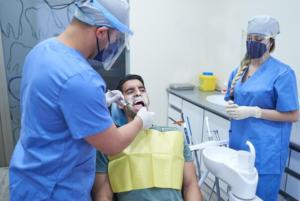
If you’re wondering, “What is Skin Cancer?” then you’re not alone. Most people are at risk of developing some skin cancer. Learn about the different types of skin cancer and how you can protect yourself. Here, we’ll discuss Excessive sun exposure and melanoma. You’ll also learn about Squamous cell carcinoma and Precancerous conditions.
Excessive Sun Exposure
Skin cancer is a serious issue, but it can be treated if caught in its early stages. Protecting yourself from UV rays is key, and you can lower your risk by limiting your exposure to the sun during the day. If you must spend time outdoors, wear a wide-brimmed hat or a wraparound-style sunglass that offers at least 99 percent protection. Also, use broad-spectrum sunscreen on exposed skin.
Nonmelanoma is the most common type of skin cancer, and excessive exposure to the sun’s ultraviolet rays (UVR) increases your risk. Research shows that 1.2 million people will develop nonmelanoma skin cancer each year, and more than 64 thousand people will die by 2020. In addition, exposure to UVR increases the risk of photokeratitis, an inflammation of the cornea.
Melanoma
Melanoma is a severe type of skin cancer that affects the skin. If it is detected early, it can be treated surgically. However, if cancer has spread to other body parts, it will likely require chemotherapy or immunotherapy to fight the disease. In some cases, they may also need radiation therapy.
It is often difficult to detect during the early stages of this disease. This type of cancer is most common in young people. The main symptom is a discolored patch that may be flat or slightly raised with irregular borders. These spots can appear on any body part, although they are most common on men’s legs and upper back.
Squamous Cell Carcinoma
Squamous cell carcinoma is a type of skin cancer that can develop anywhere in the body. Symptoms can include sores that don’t heal or changes to lesions on the skin. A doctor can diagnose the condition by examining a suspicious lesion on your skin and performing a skin biopsy. The biopsy is a small piece of tissue removed from the lesion and analyzed in a laboratory. Additional tests are sometimes necessary for the proper diagnosis and treatment.
Squamous cell cancer is highly treatable when detected early. Fortunately, the majority of cases can be cured. However, skin cancer is the most common cancer among adults in the U.S. It is not required to be reported to a cancer registry. However, the Canadian Cancer Society tracks the survival rates of patients diagnosed with squamous cell carcinoma for five years or more.
Precancerous Conditions
Precancerous conditions of skin cancer are caused by DNA damage. This damage causes genetic code alterations, eventually leading to uncontrolled cell growth. Several genetic and environmental risk factors are associated with DNA damage, including exposure to ultraviolet radiation and certain viral infections. In addition, genetic predispositions to skin cancer may also contribute to DNA damage.
Taking care of them early can prevent many precancerous conditions on the skin. A dermatologist should evaluate a person with a precancerous skin condition for possible diagnosis and treatment. This is important because precancerous lesions are highly prone to developing into skin cancer.
Treatment
Many treatment options are available for skin cancer. Treatment options include surgery and nonsurgical procedures. Nonsurgical procedures help to remove localized cancer cells. They may be used alone or in combination with other forms of treatment. Nonsurgical treatments may include topical treatments designed to target cancer without affecting healthy cells.
It is the most common type in the United States and is curable in most cases. It develops when skin cells multiply uncontrollably and grow out of control. The most common forms of skin cancer are nonmelanoma and basal cell carcinoma. The former is the most common, whereas the latter is rare but more aggressive and can invade surrounding tissue. Therefore, early diagnosis is critical to the treatment of these cancers.








